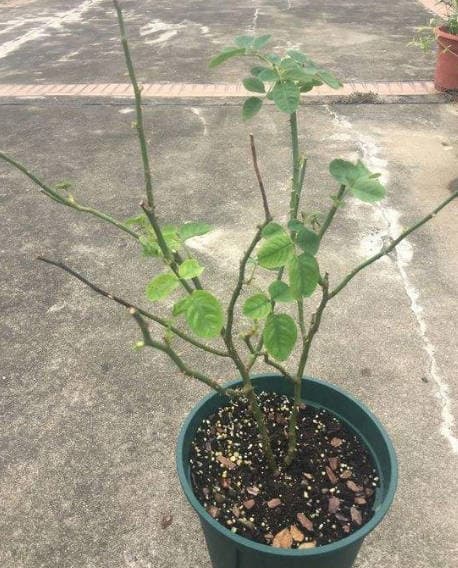Rose Cutting Transplant Guide: Step by Step
Recently many gardening enthusiasts have been asking, “My rose cuttings have rooted, can I transplant them now?” Today we will discuss in detail the best time and method to transplant rose cuttings after they have come to life.
Timing of transplanting rose cuttings after they’ve been rooted

The timing of transplanting rose cuttings cannot be generalized and needs to be determined according to different cutting methods. If the transplanting time is not chosen correctly, the new seedlings are likely to have blackened stems or even die.
There are three main methods of common rose cuttings:
- Pure vermiculite/perlite cuttings
- Nutrient soil cuttings
- Hydroponic cuttings
(Note: For detailed procedures on these three methods of taking cuttings, you can refer to the rose propagation chapters in specialized gardening books. The focus of this article is on transplanting after survival).
1. Transplanting pure vermiculite/perlite cuttings

Many gardeners prefer to use pure perlite or pure vermiculite for rose cuttings, as this method has a high survival rate and is easy to manage. However, when transplanting, these media tend to fall apart, resulting in what is effectively the equivalent of a bare-root transplant, so timing is especially critical.
How to judge the timing of transplanting:
- If you take cuttings in transparent containers, you can observe the root growth directly. It is recommended to wait until the root system has developed before transplanting.
- If using opaque pots, observe the drainage holes at the bottom of the pot. When roots grow out of the holes, the root system is well developed.
Best season for transplanting:
- Since these cuttings are equivalent to bare-root transplants, it is advisable to wait until late fall when temperatures are cooler. Transplanting in summer or early fall is more risky.
Special Situation Handling:
- Roses taken from cuttings taken after spring bloom may have developed roots in the summer. Although root conditions allow transplanting, it is still not recommended during the hot season. It is best to wait until fall when temperatures turn cooler before transplanting.

2. Transplanting cuttings in nutrient soil
Transplanting roses from nutrient soil cuttings is easier than from pure medium cuttings. However, it should be noted that the survival rate of nutrient soil cuttings is lower during the hot season of late spring and early summer.
Best season for cuttings:
Early spring and late fall are ideal times for nutrient soil cuttings, as they have a high survival rate, are easy to manage, and have a high transplanting success rate.
Transplanting Tips:
It is recommended that cuttings be taken in small pots, one plant per pot. Once the roots have grown out of the bottom of the pot, they can be transplanted with a full soil mass. This method minimizes damage to the root system, and little or no blackening or wilting of the stalks occurs after transplanting.
3. Transplanting hydroponic cuttings

Hydroponics is the easiest method of transplanting rose cuttings, but the most difficult to transplant because it must be a bare root transplant.
Key transplanting points:
- Don’t rush transplanting, wait for the roots to fully age.
- Avoid transplanting when the root system is still weak and “white-legged
- Transplant in spring, fall or winter when temperatures are cooler.
- Keep hydroponically during the hot season and supplement nutrients with foliar fertilization





